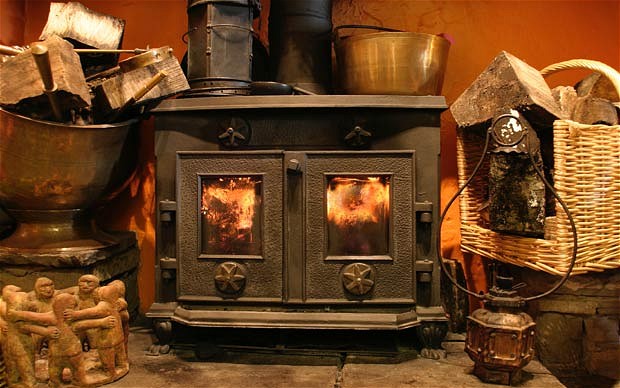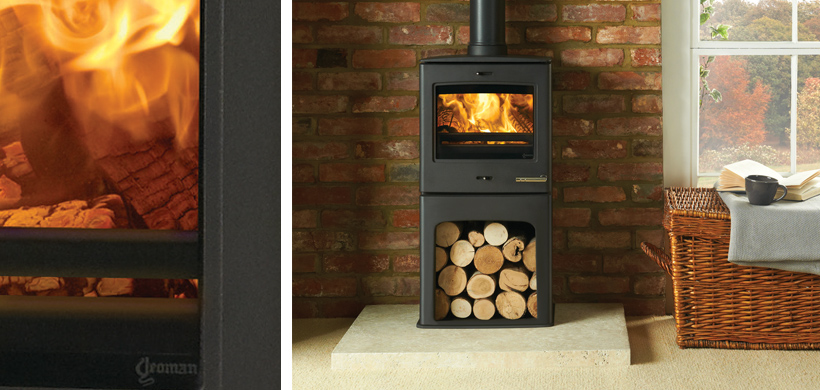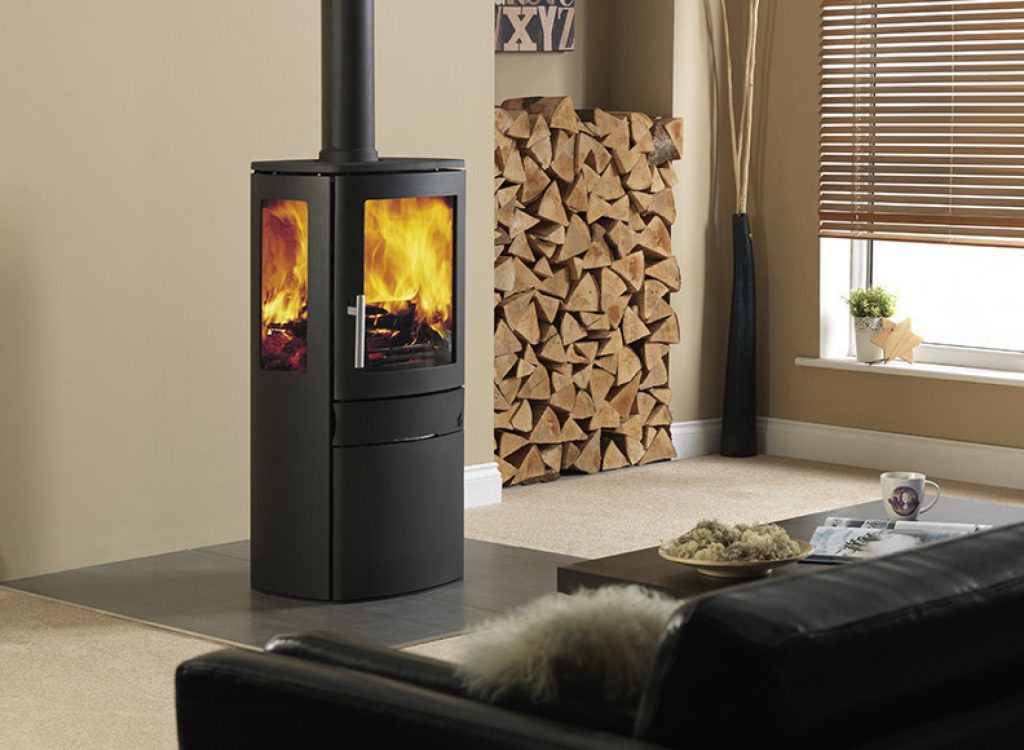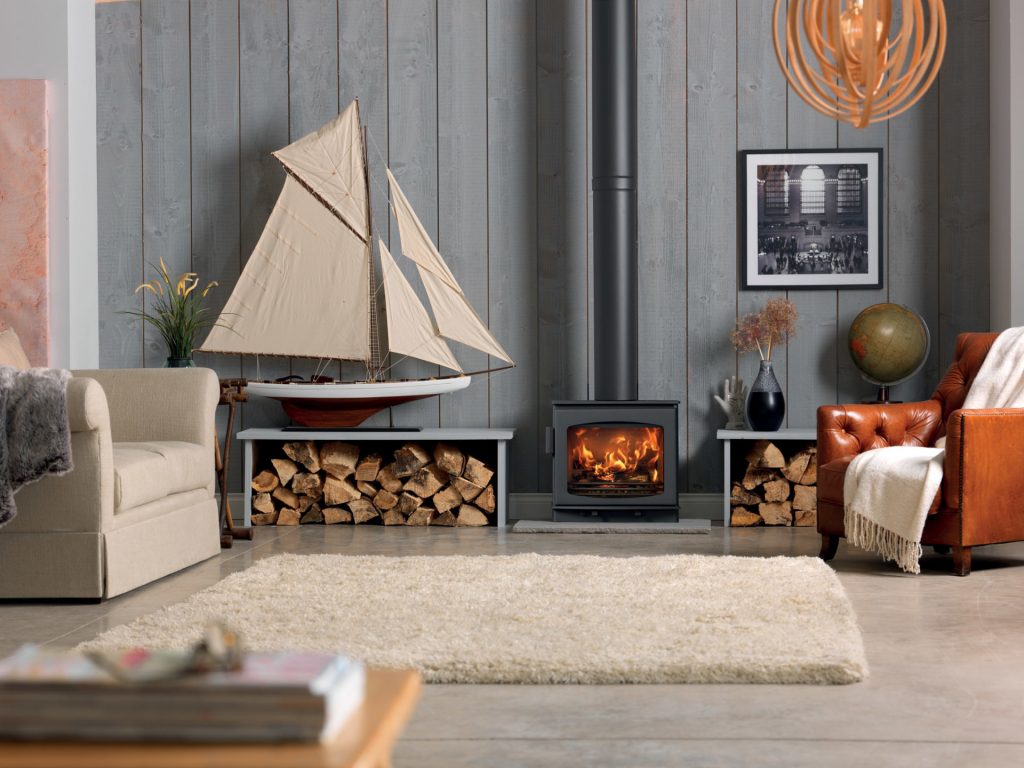There has been a lot of media coverage in relation to wood burning/multifuel stoves and what it is safe to burn. The UK government has launched a new clean air strategy and highlighted an array of different pollution sources. The simple fact is that burning any material creates heat but can also create an array of different pollutants.

The stove industry has improved the efficiency of both wood-burning and multifuel stoves enormously over the last decade. So far as to say, used correctly and burning the appropriate fuel, a modern day stove can be in excess of 80% efficient. It will also create 80% less air pollutants than stoves from just 10 years ago. In summary you should only use the following fuels:
Wood burning stove
• Dry seasoned logs which have a moisture level of no more than 20% and have not been treated with paint, resins or other chemicals.
• Dry softwood is less dense and burns quicker than dry hardwood which tends to have a longer lasting impact, and greater heat output.
Multifuel stove
• Dry seasoned logs and recommended smokeless fuels, anthracite and peat/turf briquettes. You should refer to the manufacturer’s guide for their specific models.
You may also find it useful to see a list of materials which should not be used with a wood-burning/multifuel stove. In many cases it is extremely convenient to use “waste” nearby to fuel your stove but there are many dangers. Avoid the following at all costs:-
1. Wet wood/green wood
The general consensus is that wood with a moisture reading of more than 20% is inappropriate fuel for any stove. It will not only create smoke but also dangerous levels of creosote which can impact the efficiency of your machine, flue and have been known to cause chimney fires. We also know that the wetter the wood the more pollutants are released into the atmosphere which can impact an array of medical condition such as asthma.
As a side note, as wet wood holds an above average level of moisture this requires more energy from your stove to dry the wood and then burn it properly. So, wet/green wood releases more pollutants, creosote and is highly inefficient.

2. Christmas trees
As we leave the festive period behind many people will still be waiting for their old Christmas tree to be picked up with the refuse. You should never use wood from Christmas trees on your stove because not only is it likely to have a significant level of moisture but it is likely to have been treated with an array of different chemicals and resins. These materials can increase the risk of a chimney fire and due to the various materials it will likely have been treated with, can release an array of pollutants into the atmosphere. Resist the temptation!
3. Paint/treated wood
Any material which has been painted or treated by any chemicals is likely to release an array of toxic chemicals when burned. These chemicals can be highly dangerous to you and your family as well as releasing potentially toxic fumes into the atmosphere. You only need to watch paint/treated wood burn to know that something is wrong. The chemicals used to treat the wood will often bubble and boil and sometimes release a liquid/aroma. Even though the vast majority of paints today have zero lead content these substances are still extremely dangerous when burned.
4. Coloured paper
If you take a step back and think about it, any material which is coloured will at some stage have been treated with an array of chemicals. So, if we know that everyday products such as magazines, cereal boxes, pizza boxes and wrapping paper have been treated with chemicals, surely it makes sense not to burn them? Research has shown that some coloured paper/cardboard products can release noxious, corrosive and carcinogenic gases into the atmosphere. These are not only harmful to the environment but extremely harmful to those in the local vicinity.
5. Plywood, chipboard and particleboard
We take different types of wood such as plywood, chipboard and particleboard for granted even though we know they have been treated with an array of chemicals to maintain their shape and density. You only need to watch plywood burn, as one example, to see that it burns very differently from dry logs. The smoke is different, the heat is different and the smell is different. Like an array of other treated materials, when burned, plywood, chipboard and particleboard is likely to release toxic fumes and carcinogens.

6. Liquid fire starters
You should never use any type of liquid firestarter or accelerant to start your stove. The use of kindling and increased airflow should be more than enough to get your stove started in the morning. While not necessarily a danger to the environment, liquid firestarters when used with wood-burning/multifuel stoves can be a danger to people in the area. They can create intense heat, flashbacks and have been known to cause chimney fires. Stick to the old-fashioned way when starting your stove in the morning – tradition is good.
7. Household plastics
You may have some bubble-wrap left over from Christmas, a plastic cup or two laying around for a party, and feel the temptation to use these to start your stove. Surely just a relatively small amount of household plastics can do no harm? Burning household plastic releases toxic chemicals such as hydrochloric acid, sulphur dioxide, heavy metals and dioxins which are extremely dangerous to your health and the environment. Under no circumstances should you burn such material!
8. Cardboard
In a similar fashion to chipboard and plywood, cardboard is treated with an array of chemicals and resins. Even though it burns relatively well it should be avoided at all costs when looking to fuel your stove. The release of potentially toxic chemicals will not only impact the outside environment, as pollutants escape up the flue, but can also endanger those living in your home. As a rule of thumb, if any material has undergone any treatment with chemicals and resins it should never be used as fuel.

9. Driftwood
The advice not to use driftwood for your stove may surprise many people because surely this is just a waste product? However, the likelihood is that not only will the driftwood have an element of moisture at its core but might also contain a level of salt. When burned, salt particles are extremely corrosive and can cause damage to your stove, fireplace and flue. The wood may also have been exposed to an array of different chemicals in the water which would add to the dangers.
10. Your stove is not a bin
In general, stick to dry seasoned firewood wood for your wood-burning stove and only additional recommended smokeless fuels for your multifuel stove. Unfortunately, many people have got into the habit of using their stove like an incinerator/bin. This is very dangerous and can lead to potentially harmful levels of toxic chemicals in the atmosphere. Stick to the recommended fuel, maintain and clean your stove on a regular basis and this will help ensure high efficiency levels going forward – and less pollution!


